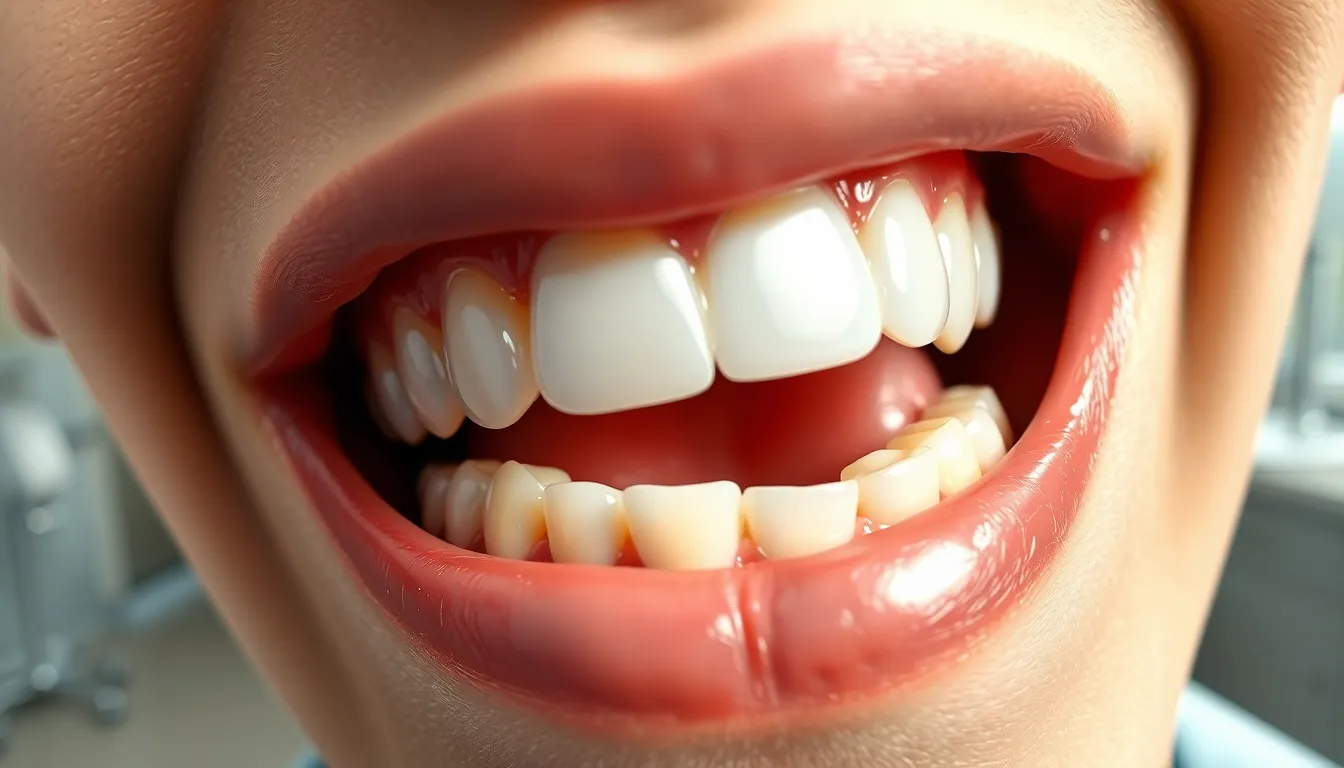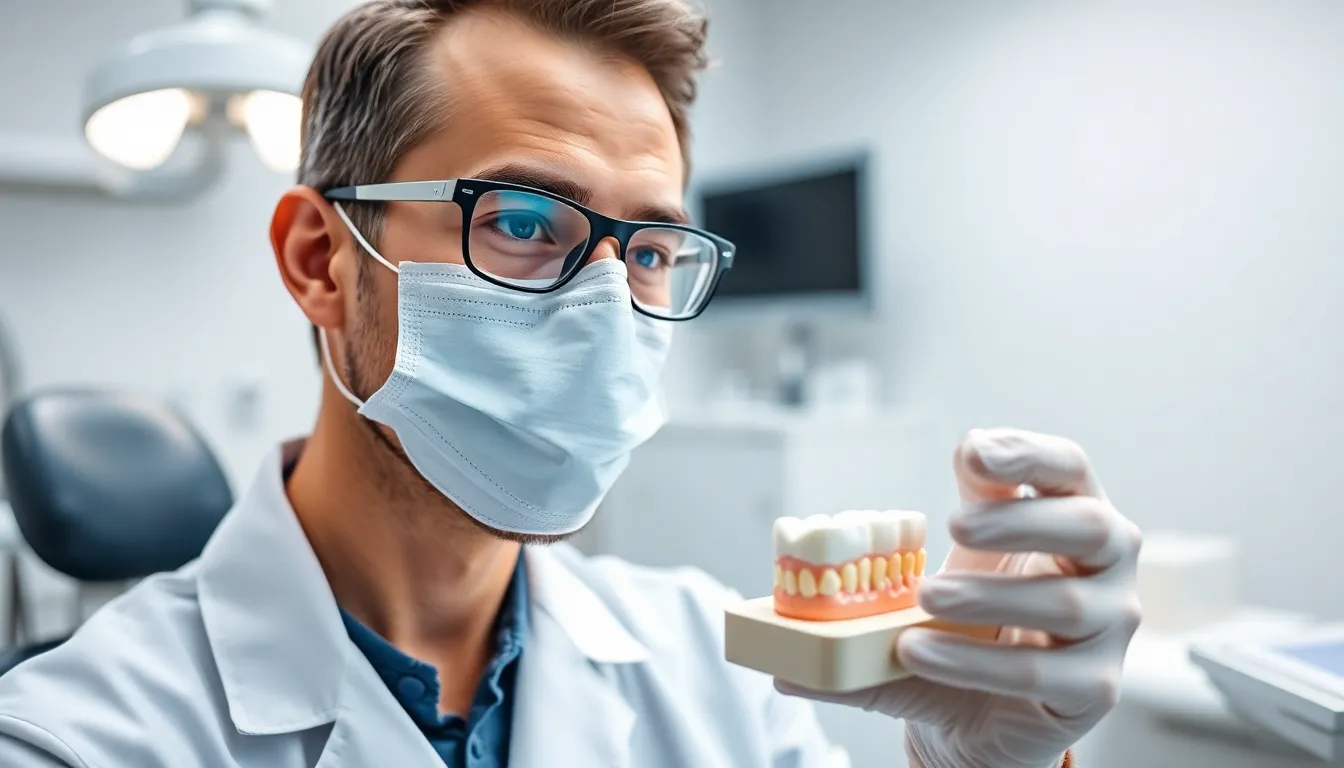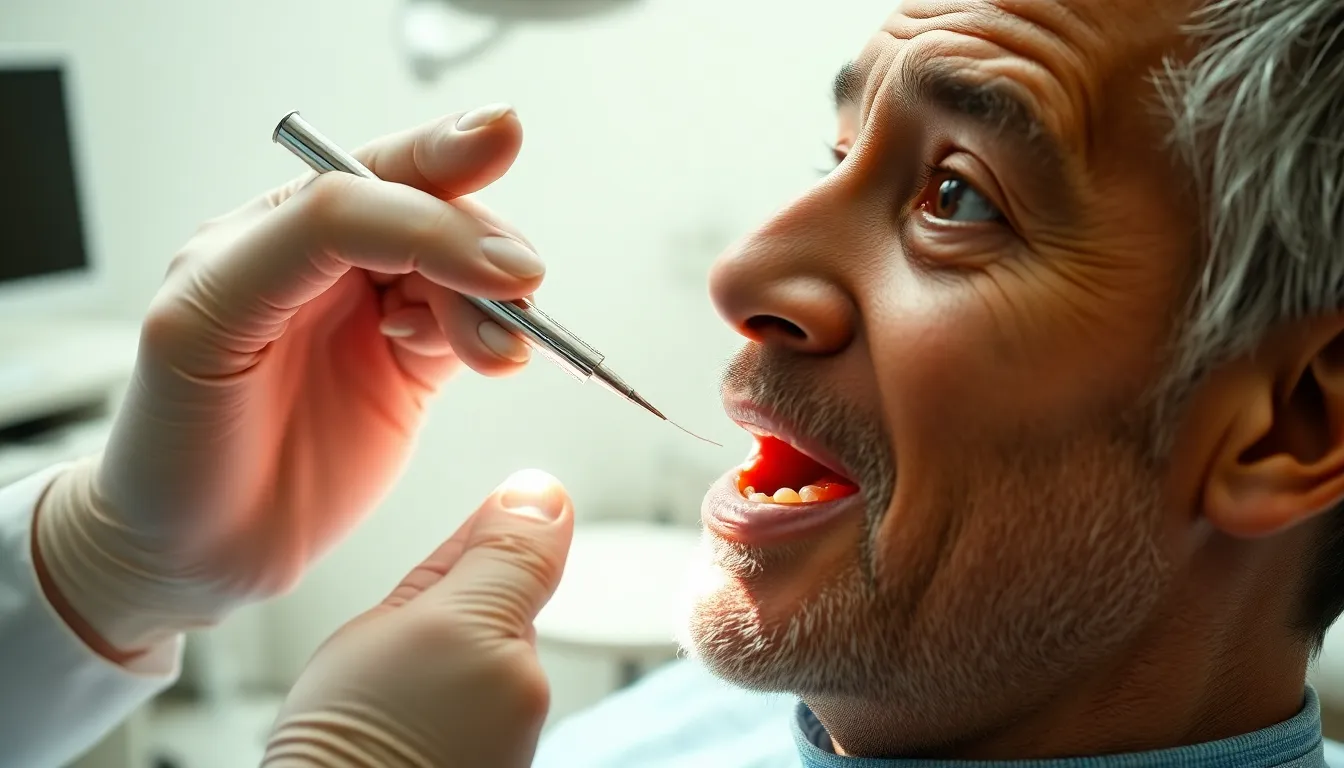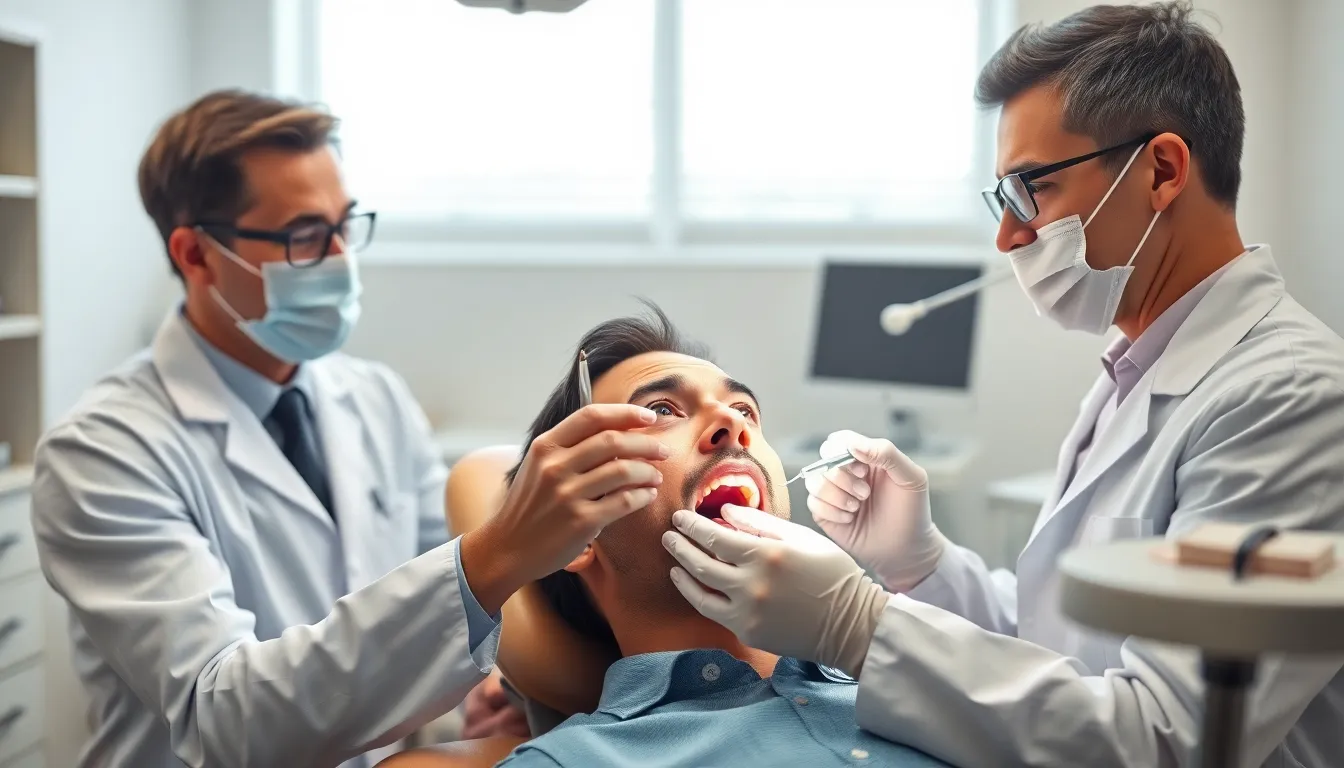Are you tired of traditional dental fillings that are noticeable every time you smile? Porcelain inlays offer a superior alternative that combines durability with natural aesthetics for your teeth.
When it comes to repairing moderate tooth damage, porcelain inlays stand out as an elegant solution. Unlike conventional fillings, these custom-crafted restorations fit precisely into the damaged area of your tooth after decay is removed. They’re made of high-quality dental porcelain that’s color-matched to your natural teeth, making them virtually invisible when you smile or speak.
What Is a Porcelain Inlay?
A porcelain inlay is a custom-made dental restoration that fits precisely into the prepared cavity of a damaged tooth. These restorations are crafted from high-quality dental porcelain in a laboratory after your dentist takes an impression of your prepared tooth. Unlike traditional fillings which are molded directly in your mouth, porcelain inlays are created outside the mouth and then bonded to your tooth in a separate appointment.
Porcelain inlays occupy the middle ground between fillings and crowns in terms of tooth restoration options. They’re designed to repair moderate tooth damage that’s too extensive for a simple filling but doesn’t require the complete coverage of a crown. The porcelain material matches your natural tooth color, creating a seamless appearance that’s virtually undetectable.
Dr. Harris recently treated Sarah, a 42-year-old patient who was concerned about a visible silver amalgam filling in her upper molar. “I was hesitant about getting another metal filling that everyone could see when I laughed,” Sarah explained. Dr. Harris recommended a porcelain inlay instead. “The difference was remarkable—not just in appearance but in how natural it felt compared to my old filling,” Sarah reported after treatment.
Porcelain inlays differ from onlays in their coverage area. Inlays fit within the cusps (raised points) of your tooth, while onlays extend over one or more cusps. Both restorations are fabricated using the same high-quality materials and procedures, with the primary difference being the extent of tooth structure they cover.
The Benefits of Porcelain Inlays

Porcelain inlays offer important advantages as a conservative dental restoration option for repairing moderate tooth damage. They’re particularly effective for Class I and II cavities, providing a perfect balance between functionality and aesthetics.
Aesthetic Advantages
Porcelain inlays perfectly mimic your natural tooth enamel, maintaining their tooth-colored appearance without discoloration over time. The custom fabrication process ensures each inlay fits precisely into your tooth, creating a seamless integration that’s virtually indistinguishable from your original tooth structure. Many of Dr. Harris’s patients express delight at how their restored teeth blend naturally with their smile, often commenting that even they can’t tell which tooth received the inlay when looking in the mirror.
Durability and Longevity
Clinical studies demonstrate impressive survival rates for porcelain inlays, with approximately 90.9% remaining intact after several years of use. Your porcelain inlay can easily withstand normal chewing forces, providing a strong, functional restoration for daily activities. The marginal integrity of these restorations remains stable after the initial post-placement period, contributing to their long-term reliability. Dr. Harris notes that patients who received porcelain inlays 10+ years ago often still have their original restorations functioning perfectly, a testament to their exceptional durability when properly designed and bonded.
The Porcelain Inlay Procedure

The porcelain inlay procedure involves multiple steps to create a custom-fitted restoration that repairs damaged teeth while preserving natural tooth structure. This process typically requires two dental visits to complete the restoration.
Initial Consultation and Planning
Your journey toward a porcelain inlay begins with a comprehensive examination of the affected tooth. During this initial appointment, your dentist removes any existing fillings or decayed tissue to properly evaluate the extent of damage. After preparing and shaping the tooth to accommodate the inlay, an impression or mold is taken to capture the exact dimensions of the prepared cavity. This crucial step helps your dental team select the appropriate porcelain material and match the shade perfectly to your natural tooth color, ensuring a seamless blend with your smile.
Dr. Harris recalls a patient named Michael who was concerned about the appearance of his visible molars when laughing. “The planning phase is where the magic happens,” Dr. Harris explains. “Taking precise impressions allowed us to create an inlay for Michael that not only restored function but matched his tooth color so perfectly that even he couldn’t tell which tooth had been restored.”
The Preparation Process
The preparation begins with your dentist administering a local anesthetic to ensure your comfort throughout the procedure. Using specialized dental instruments, the dentist meticulously removes all decay and damaged portions of the tooth, creating a clean cavity for the inlay. The tooth is carefully shaped to precise specifications that will accommodate your custom porcelain restoration. Once the preparation is complete, your dentist places a temporary filling in the cavity to protect your tooth from sensitivity and further decay while your permanent porcelain inlay is being crafted at a dental laboratory.
Many patients like Rebecca find this part of the process surprisingly comfortable. “I was nervous about having my tooth prepared,” she shared, “but the numbing was effective, and Dr. Harris explained each step as he worked, which helped me relax.”
Temporary and Permanent Placement
Your temporary filling serves as a protective shield for your prepared tooth during the fabrication period of your porcelain inlay. This interim restoration prevents sensitivity and maintains the space for your permanent inlay. When your custom-crafted porcelain inlay returns from the laboratory, you’ll return for a second appointment. Your dentist removes the temporary filling, verifies the fit and color match of your new porcelain inlay, and permanently bonds it to your tooth using strong dental adhesive. This bonding process creates a durable restoration that strengthens your tooth while restoring its original appearance and function.
Porcelain Inlays vs. Other Dental Restorations

Porcelain inlays provide a middle ground between traditional fillings and full crowns, offering distinct advantages over other restoration options. These custom-made restorations are specifically designed to repair moderate tooth damage while preserving more of your natural tooth structure.
Porcelain Inlays vs. Composite Fillings
Porcelain inlays deliver superior strength and durability compared to composite fillings, providing important reinforcement to weakened teeth. Your teeth become less susceptible to cracking or breaking when restored with porcelain inlays rather than standard composite fillings. The material’s resistance to staining and wear ensures a natural appearance that lasts for years, unlike composite fillings that often discolor over time.
“I’ve had patients return for check-ups 8-10 years after receiving their porcelain inlays, and they’re still functioning beautifully with minimal wear,” notes Dr. Harris. “One patient, Jennifer, had previously replaced her composite fillings every 5-7 years due to staining and wear. After switching to porcelain inlays, she’s enjoyed both aesthetic stability and improved structural integrity.”
Porcelain inlays create a more precise fit and better seal against bacteria, effectively protecting your tooth from further decay. This precise adaptation to your tooth’s unique contours ensures long-term protection that composite fillings simply can’t match.
Porcelain Inlays vs. Crowns
Porcelain inlays preserve significantly more of your natural tooth structure than crowns do. Crowns require extensive removal of healthy tooth material to accommodate the full-coverage restoration, while inlays need only the damaged portion removed. This conservation approach maintains more of your original tooth integrity.
The focused protection of porcelain inlays makes them ideal for moderate damage without sacrificing the entire tooth surface. For teeth with substantial damage affecting the cusps or a large portion of the tooth, crowns remain the preferred option.
Dr. Harris explains, “I recommended a porcelain inlay rather than a crown for my patient Robert, who had moderate decay in his lower molar. By choosing an inlay, we preserved 70% more of his healthy tooth structure compared to what a crown would’ve required. Five years later, his restoration remains in excellent condition with perfect margins and no signs of recurrent decay.”
Both restoration types offer excellent aesthetics and durability, but the choice between them depends primarily on the extent of damage. Porcelain inlays excel for moderate cavities or fractures, while crowns better serve severely compromised teeth that need comprehensive protection.
Cost and Insurance Considerations

Porcelain inlays typically cost between $450 and $1,200 per tooth, varying based on your geographic location, dentist expertise, and procedure complexity. Additional expenses may arise if preparatory treatments like root canal therapy or gum treatment are needed before placing the inlay. Even though being more expensive than traditional fillings, porcelain inlays offer exceptional longevity, often lasting more than 15 years with proper care.
Insurance Coverage Options
Many dental insurance plans provide partial or complete coverage for porcelain inlays, though reimbursement structures differ significantly between providers. Insurance companies categorize inlays as either basic or major restorative services, with basic coverage aligning with fillings and major coverage typically reimbursing a percentage of the total cost. Insured patients might pay as little as $40 to $100 out-of-pocket, depending on their exact plan details and whether their dentist participates in their insurance network.
“I had a patient named Robert who was initially concerned about the cost of his porcelain inlay,” shares Dr. Harris. “After reviewing his insurance coverage, we discovered his plan classified inlays as a basic restoration, covering 80% of the procedure. Robert was pleasantly surprised to learn his out-of-pocket expense would be just $90 for a restoration that would last him many years.”
Factors Affecting Cost
Dentist expertise significantly influences pricing, with more experienced practitioners often charging premium rates for their advanced skills and consistent results. Their expertise typically leads to better long-term outcomes, potentially reducing future repair costs. Geographic location plays a crucial role in cost determination due to regional variations in labor expenses and material prices.
Insurance companies sometimes downgrade inlays to fillings for reimbursement purposes, affecting your coverage and potential out-of-pocket costs. Proper documentation and accurate coding during the billing process enhance reimbursement likelihood for porcelain inlays and onlays. Before scheduling your procedure, verify your insurance details and discuss potential costs with your dentist to avoid unexpected expenses.
Maintenance and Care for Porcelain Inlays

Porcelain inlays require exact maintenance practices to ensure their longevity and aesthetic appeal. Maintaining excellent oral hygiene forms the foundation of proper inlay care, which includes brushing at least twice daily with a soft-bristled toothbrush and fluoride toothpaste. Daily flossing around your inlay should be performed gently—slide the floss out rather than snapping it upward to prevent loosening the restoration.
Protecting your porcelain inlays from physical damage means avoiding biting hard objects like ice, nuts, or pens. These seemingly harmless items can cause cracks or chips in your restoration even though porcelain’s durability. Many patients benefit from wearing a nightguard, especially those who grind or clench their teeth during sleep.
“I’ve seen patients maintain their porcelain inlays in pristine condition for over 15 years by following these simple care guidelines,” notes Dr. Harris. “One patient, Jennifer, received porcelain inlays on her lower molars a decade ago and still reports they look and function just like her natural teeth—all because she’s diligent about protection and regular dental visits.”
Regular dental check-ups play a crucial role in monitoring the condition of your inlays. Professional cleanings help maintain not only the restoration but also your overall oral health. Your dentist can detect early signs of problems and address them before they compromise your inlay’s integrity.
Limiting consumption of staining substances preserves the natural appearance of your porcelain inlays. Coffee, tea, and red wine can affect the color of surrounding teeth, creating a noticeable difference between your restoration and natural teeth. Using an alcohol-free antibacterial mouthwash keeps the area clean without irritating the restoration site.
Proper bite alignment contributes significantly to inlay longevity. During your regular dental visits, your dentist should check how your teeth come together to ensure your inlay isn’t subjected to excessive pressure. Bite adjustments might be necessary to prevent damage to both the inlay and surrounding teeth.
Conclusion
Porcelain inlays stand out as an exceptional dental restoration option combining durability aesthetics and tooth preservation. They offer a perfect middle ground between traditional fillings and full crowns with impressive longevity of 15+ years when properly maintained.
While the initial investment may be higher than conventional fillings the long-term benefits make porcelain inlays worth considering. Their custom-crafted precision fit ensures comfort and functionality while their natural appearance restores your confident smile.
Your dentist can help determine if porcelain inlays are right for you based on your exact dental needs. With proper care including regular dental check-ups and good oral hygiene your porcelain inlays will continue to serve you beautifully for years to come.
Frequently Asked Questions
What are porcelain inlays?
Porcelain inlays are custom-made dental restorations that fit precisely into prepared cavities of damaged teeth. They serve as a middle ground between fillings and crowns, ideal for moderate tooth damage that requires more than a simple filling but less than a full crown. Made from high-quality dental porcelain, they match the color of natural teeth and remain virtually invisible.
How are porcelain inlays different from traditional fillings?
Porcelain inlays are custom-crafted in a laboratory after an impression is taken, while traditional fillings are directly applied in the dental office. Inlays offer superior strength, durability, and aesthetics compared to composite fillings. They maintain their color without discoloration over time and provide better protection against cracking and wear.
What’s the difference between inlays and onlays?
Inlays fit within the cusps (raised points) of the tooth, while onlays extend over one or more cusps. Both are made from the same high-quality materials and serve similar purposes. The choice between an inlay or onlay depends on the location and extent of tooth damage, with onlays being used when damage affects the cusps.
How long do porcelain inlays last?
Porcelain inlays have impressive longevity, with clinical studies showing approximately 90.9% survival rate after several years. With proper care, they typically last over 15 years, significantly longer than traditional fillings. Many patients have had their original porcelain inlays functioning perfectly for over a decade.
How many dental visits are required for porcelain inlays?
The porcelain inlay procedure typically requires two dental visits. The first visit involves evaluation, removal of decay, and taking impressions. A temporary filling is placed while the custom inlay is fabricated in a laboratory. During the second visit, the temporary filling is removed, and the permanent porcelain inlay is bonded to the tooth.
How much do porcelain inlays cost?
Porcelain inlays typically range from $450 to $1,200 per tooth. The cost varies based on geographic location, dentist expertise, and procedure complexity. While more expensive than traditional fillings, their exceptional durability makes them cost-effective in the long run, as they rarely need replacement.
Does insurance cover porcelain inlays?
Many dental insurance plans provide partial or complete coverage for porcelain inlays. Reimbursement structures vary significantly between providers. Some plans may cover 50-80% of the cost, classifying inlays as “major restorative procedures.” It’s advisable to verify your specific insurance details before proceeding with treatment.
How do I care for my porcelain inlays?
Maintain excellent oral hygiene by brushing twice daily and flossing gently. Avoid chewing hard objects that could damage the inlays. Attend regular dental check-ups to monitor their condition. Limit consumption of staining substances like coffee and red wine. Proper bite alignment is also crucial for inlay longevity, so inform your dentist of any discomfort.
Are porcelain inlays better than crowns?
Porcelain inlays preserve more natural tooth structure than crowns, making them ideal for moderate damage. Crowns require significant tooth reduction and cover the entire visible portion of the tooth. The choice between inlays and crowns depends on the extent of damage, with inlays being preferred for moderate cavities or fractures.
Can porcelain inlays stain or discolor over time?
Unlike composite fillings, porcelain inlays resist staining and maintain their color over time. The high-quality dental porcelain used in inlays mimics natural tooth enamel and is highly resistant to discoloration from coffee, tea, wine, or tobacco. This ensures they remain aesthetically pleasing throughout their lifespan.







